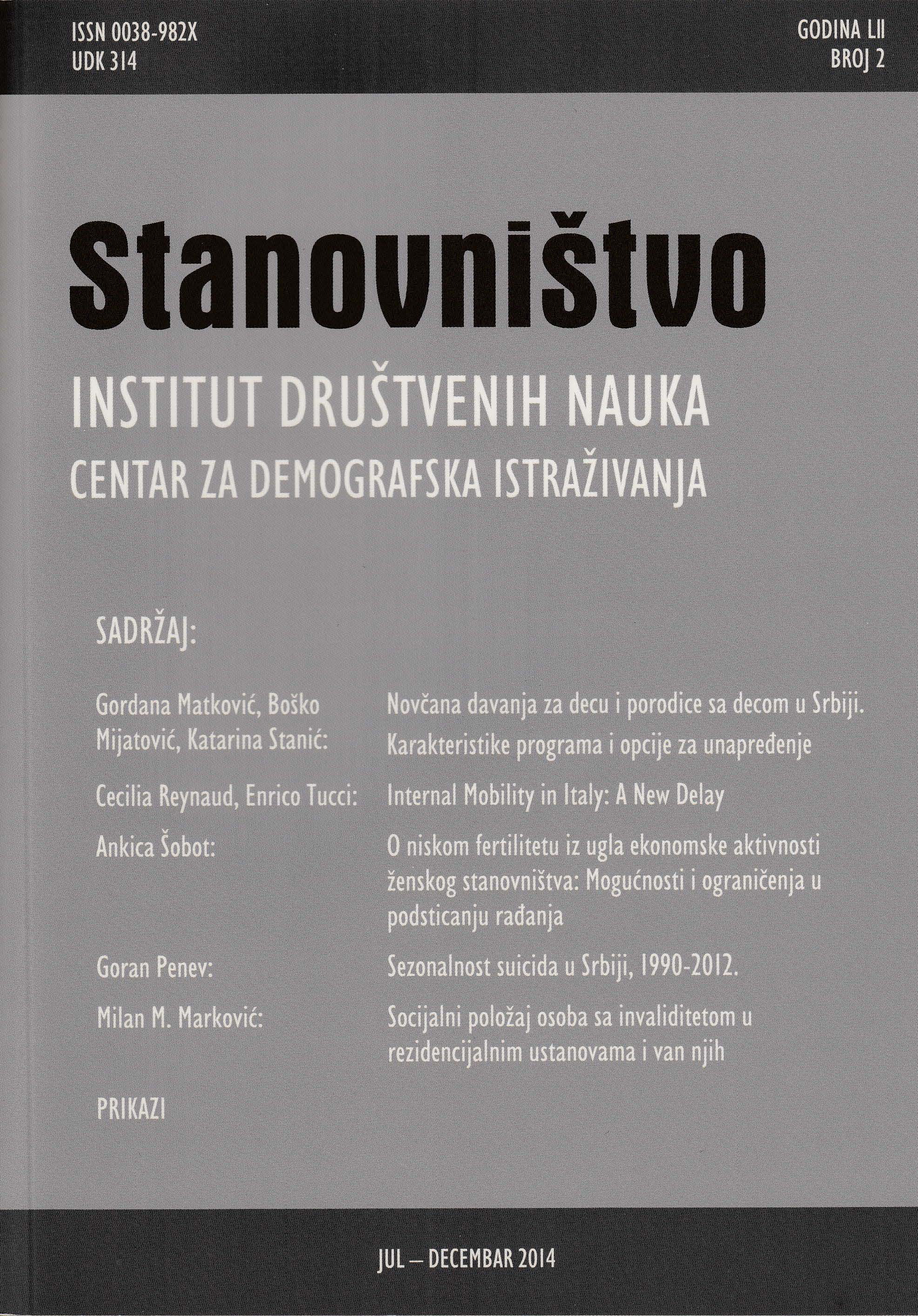Internal Mobility in Italy: A New Delay
Internal Mobility in Italy: A New Delay
Author(s): Cecilia Reynaud, Enrico TucciSubject(s): Social Sciences, Gender Studies, Demography and human biology, Rural and urban sociology, Migration Studies
Published by: Институт друштвених наука
Keywords: internal migration; transfer of residence; North-South divide
Summary/Abstract: In Italy, internal migration has made a far more important contribution to defining the territorial distribution of the population as it is today, and as such must not be neglected.In this paper, we attempt to understand which type of migration has had the strongest influence on migration trends in recent years, what contribution the various geographical areas have made to internal migration and what effect the migration of foreigners has had. We also want to examine the characteristics of the individuals taking part in migrations.By analysing the data on changes of residence – the most frequently used source for studying internal mobility – divided by geographical area and then by geographical area of destination and origin, we can get an idea of whether migration has changed or not over the last decade. In particular, we will be analysing transfers in the years from 2003 to 2012.We constructed the in-migration and out-migration rates for each geographical area and type of migration, as well as breaking down the rates by gender, age class and citizenship, distinguishing between Italians and foreigners. Lastly, we will apply a logistical regression model to the flows, comparing the inter-area and intra-area migration types to see whether the differences are mostly attributable to the characteristics of the individuals or the situation.Migrations in Italy, which have represented a particularly important phenomenon for population distribution and trends, picked up in the 1990s before increasing once more in 2010 and reaching a particular intensity in 2012. This could be linked to the displacements recorded in the years after the census; however, the increases are too high to be explained only by this factor.Intra-provincial migrations have always been, and continue to be, the most common, probably due to a population that continues to spread throughout the territory and expand into larger areas, to the point that city borders are no longer easy to define, forming extended metropolitan areas. The other types considered, although less important from a numerical point of view, appear to be even more significant for describing the situation in Italy. Migrations between geographical areas were particularly useful for describing the strong North-South dichotomy in our country in terms of economic and social development. More recently, the return of South to North migration appears to depend not only on the differences in numbers and quality on the labour market, but also on the continuation of the economic crisis. By analysing the people who migrate in Italy, we can see that young people and foreigners play a pre-eminent role, along with a confirmation of the higher level of economic and social development in the North than the South, where women still hold a marginal position. When we analyse migration by gender, we see a higher level of participation among women, and in particular young women, although out in Northern areas, with a continued delay in long-distance migrations from the South. The role of foreigners also stood out clearly, who despite behaving in a similar way to Italians, as confirmed by the models, show some specific features such as a higher level of participation among women even in adult age classes, a high level of in-migration in Southern areas and a lower level of long-distance migrations. Like Italians, the balance of foreign migration in the South is strongly negative, but in this case the finding is due to high levels of both in-migration and out-migration.
Journal: Stanovništvo
- Issue Year: 52/2014
- Issue No: 2
- Page Range: 21-42
- Page Count: 22
- Language: English

